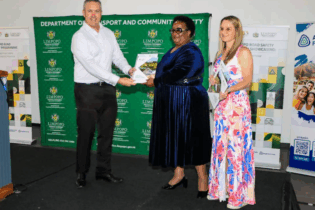Technologies in concrete may soon enable the South African National Roads Agency (Sanral) to build precast concrete roads off-site, and ship them wherever they are required in the country.
As incredulous as it may seem, the technology is being investigated by the roads agency and forms just one of many new technologies being carefully studied by experts around the country. Speaking at the Southern Africa Readymix Association (Sarma) conference in Broederstroom recently, Louw Kannemeyer, roads network manager for Sanral, said that concrete remains a viable alternative to traditional asphalt pavements and new techniques are constantly being investigated.
Advantages
The advantages of precasting road sections is that the manufacturing process can take place within a factory environment without the challenges normally associated with road construction on-site, such as weather extremes, traffic etc. This enables consistently high-quality surfaces to be produced, which are simply shipped to the site and secured onto the base materials. Apart from technical advantages, the manufacturing process can speed-up the actual time spent on-site as surfaces can be quickly secured one after the next.
Ultra-thin concrete
Apart from futuristic plans, the agency has already begun using other high-tech concrete technologies on the roads. Kannemeyer explained that at present more than 200 lane kilometres of ultra-thin reinforced concrete has already been used on freeways around the country, especially on Gauteng’s freeway improvement project.
“This technique makes use of readymixed concrete containing a locally refined recipe of high strength concrete (containing fibres and metal hooks), which is poured over a specially designed steel reinforcing mesh. It enables the surface to be poured to a depth of only 70 mm – even on high usage freeways around Johannesburg. Ultra-thin concrete also has the advantages of being labour intensive, saving on construction materials. It is also durable and strong.”
He added that the technique is constantly being refined by the agency and remains a viable construction method that will be considered wherever roads are being constructed. Currently, readymix concrete is mainly used for structures, side drains, retaining walls and concrete barriers, and opportunities exist for concrete suppliers to innovate and work with Sanral to develop new products and techniques. Simultaneously, he added that quality issues that have dogged some readymix supplied to Sanral projects needed to be addressed. Associations like Sarma would therefore play an important role in regulating the industry in future, as “just one bad experience can taint the entire industry”, he said.
Scale of road infrastructure
“South Africa has a vast network of 746 000 km of roads, with 153 000 km paved and the rest being gravel or dust roads. Overall, we have the tenth longest network in the world, with an estimated replacement cost valued of more than R2 trillion. In addition, we have a huge network of unproclaimed roads, mainly in the former homelands, that span about 140 000 km different types of roads.
“Our biggest challenge though is maintenance. Throughout the country, preventative maintenance has been lacking, and simple tasks like crack sealing, cleaning drainage, cutting of grass etc., has not been done. As a result, we have a major backlog and the price we need to pay is huge.”
He concluded that Sanral’s responsibilities extend only to national roads and it is less affected by maintenance issues than provincial and local authorities. This is largely as a result of its strict preventative maintenance schedules that are undertaken on a constant basis.








